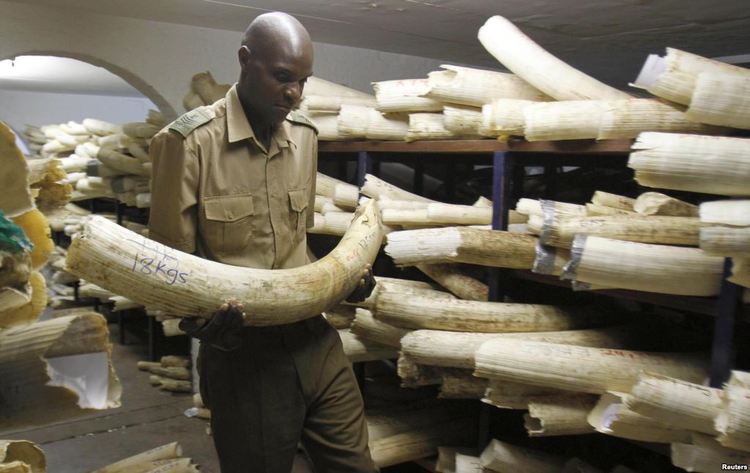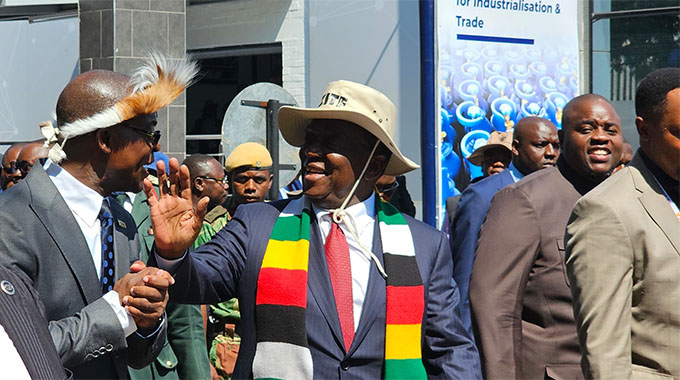Time Zim reconsidered Cites membership?


Zimbabwe wants to be allowed to sell its elephants, its 96 000 kilogrammes of ivory, and its lions to help raise revenue to protect the same
Jeffrey Gogo Climate Story
TWO weeks back a report on local TV claimed Zimbabwe was “celebrating” the outcome of a recent Convention on International Trade in Endangered Species (Cites) meeting in South Africa. This is despite the fact that Zimbabwe failed to get its way in the lifting of a global ban in ivory trade — a key pre-conference target. The other goal was to stop Cites from banning sales of live elephant and lion, or hunting of such game for sport, completely.
Zimbabwe succeeded on this one, but only as far as the next Cites conference in 2019, perhaps earlier. It does leave a kind of bitter taste that Zimbabwe is said to be “celebrating” decisions that leave its conservation efforts in no better situation than they were before the September meeting.
In reality, the outcome demonstrates that Zimbabwe, together with other ivory proponents like South Africa and Namibia, have only survived to live another day. Pressure is mounting, and unrelenting. Western nations have ganged up with some African countries like Kenya, Burkina Faso and Chad, which have failed to manage their wildlife, to frustrate attempts for legitimate ivory trade.
Almost a decade since the last one-off sale, there was a general belief across southern Africa that a Cites conference for which the region was host will let up a bit. But the evidence of rejection for such hope is heart-breaking. About 75 percent of the Cites members voted to reject a proposal by Zimbabwe, Namibia and South Africa seeking to introduce a mechanism that would allow for trade in ivory in future.
At best, the reasons for rejection — that ivory trade fuels poaching — were flimsy. Cites is well aware these claims are unsubstantiated, false even, as amply demonstrated by the rhino horn trade ban, in place for 40 years now. That ban has done nothing to stop over 5 000 white rhinos from being slaughtered illegally.
But that’s just how flawed the entire system has become. A few nations with money have and continue to use their money to influence decisions by some weak and poor nations in Africa, particularly those that have had it tough protecting their wildlife.
Between now and the next Cites conference in 2019, there is certainty the anti-ivory crusade will get even stronger, while those in favour weaken, as has been the case over the years. How Zimbabwe, and other like-minded nations, react to this existential threat will be crucial. A radical alternative may include a complete or partial break-away from the Convention.
In this scenario, countries backing the trade in ivory may create their own market, supported by bilateral instruments and agreements that do not only legitimise trade outside of the Cites, but ensure it is sustainable, transparent and accountable — with all trade statistics made public.
Or the ivory proponents could stick around in Cites, and hope to force change from within. While change this way is highly unlikely, it seems likely nations will opt for this route. Environment, Water and Climate Minister Oppah Muchinguri Kashiri has hinted as much.
“To us the value of those tusks is very high; therefore we shall wait until an opportune time to sell,” she told Parliament last Wednesday. Zimbabwe wants to be allowed to sell its elephants — 80 000 of them, its 96 000 kilogrammes of ivory, and its lions to help raise revenue to protect the same, authorities say.
The current stock of ivory — the remains of thousands of elephants hunted illegally for their tusks, or those dying from natural causes — is worth an estimated $13 million, according to calculations by The Herald Business.
It could be more, but our figure is based on the average price of $135 a kg reported at Zimbabwe’s last legal sale of 3 700kg of ivory to Japan and China in 2008. We assume any future sale will be benchmarked against the last per kg selling price.
As things are, those countries stuck with tonnes of ivory, and willing to sell to raise money for conservation, have a limit in options. Cites, the global watchdog for endangered species, is unjustifiably restrictive, politics has taken over.
Countries in southern Africa that carry the world’s burden, looking after giant elephant herds, are being forced to continue shouldering the heavy load by those countries who do not co-exist with the often destructive animal simply because they have the money to influence the weak. And yet, outside Cites, no one pays attention, except, of course, the underground wildlife gangs. But that’s just what everyone has been trying to avoid.
It is difficult to see the Convention on International Trade in Endangered Species ever reforming to suit Zimbabwe’s ivory demands, going forward. The opportunity for legitimate trade is closing with each passing year, with countries like Kenya burning over 100 tonnes of ivory in public, just to prove the point elephant tusks are worth less except for the purposes of driving poaching. Just how long Zimbabwe will continue to wait for the “opportune time to sell” is anybody’s guess.
Inside Cites, that dream could be a nightmare come true. As far as ivory trade is concerned, the Cites has failed to be neither progressive nor pragmatic. And that’s not benefiting Zimbabwe — a country that almost self-funds its entire wildlife work (one of the best conservation success stories across Africa) — any bit. Other countries often receive generous payouts from outside – and still fail in conservation. We do not expect nations like Kenya, which has received over $150 million for wildlife conservation over the next decade, to appreciate Zimbabwe’s need to sell its ivory.
Talking to countries like Kenya within the precinct of the Cites isn’t going to produce results any different from what we have already seen. Perhaps it is high time authorities began to consider options outside the Convention, and, possibly re-evaluate its membership.
God is faithful.









Comments